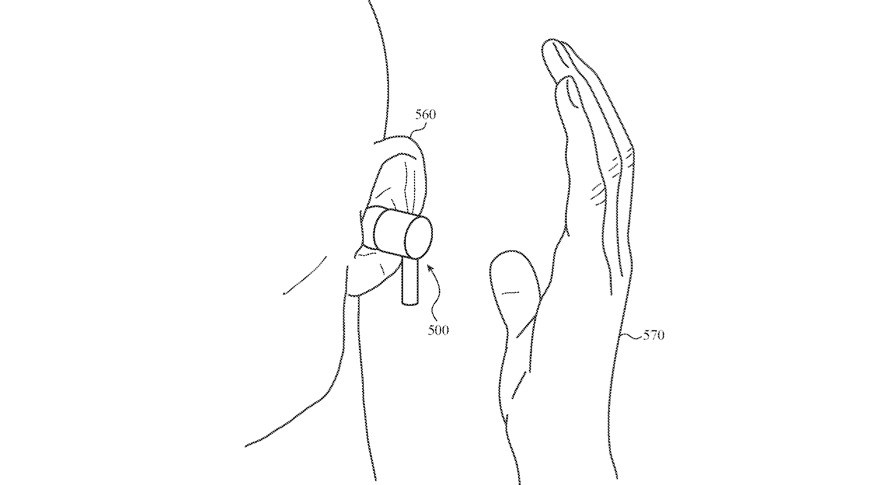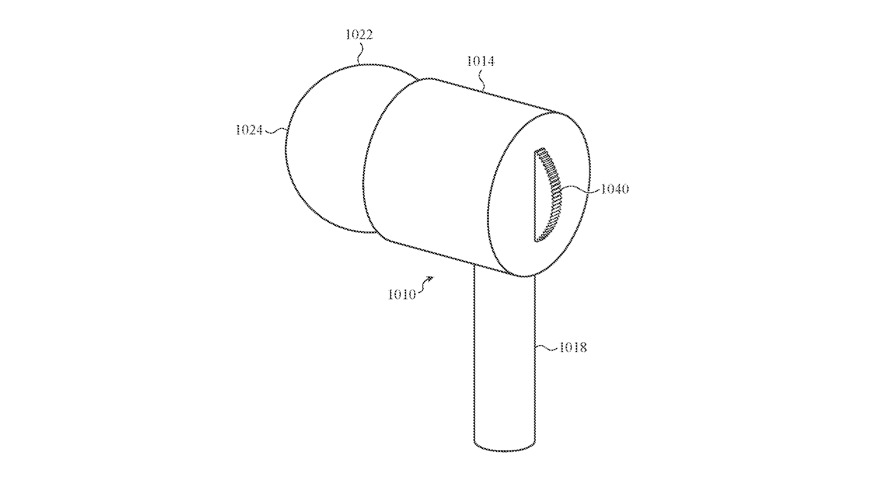Apple is investigating how to make AirPods respond to gestures, have more touch sensitive areas, and even feature physical buttons or scroll wheels.
It seems Apple staff may have got as fed up of Siri on AirPods or AirPods Pro not always listening. Newly revealed research shows that the company has been looking to address this by placing more controls on the AirPods — including both touch-sensitive areas and even a rotary wheel to control volume.
"Wearable Interactive Audio Device," is a patent application that only refers to earbuds, but every drawing is recognizable as a basic AirPod. The AirPods are shown as practically block diagrams, so if there's any design change planned for the physical form, it can't be seen here.
What can be seen, though, are multiple different types of extra controls, and multiple arrangements of them, too. "Many traditional earbuds suffer from significant drawbacks that may limit the ability to control sounds, or other outputs, at the earbud," says the patent application.
"Further, earbuds and/or other connected devices may be unresponsive to voice commands, thereby limiting the adaptability of the earbud to control multiple types of functions," it continues.
Part of Apple's criticism of previous earbuds is that "in many cases, the earbud requires a hardwired connection that physically couples [it] to another device." It's possible, then, that at least portions of this patent application date to before Apple released AirPods.
Conceivably, then, the AirPods and AirPods Pro that Apple has already shipped are really the culmination of all the design considerations described in this application. However, this newly-revealed patent application was filed by Apple in July 2020, and although it references prior applications, those date to 2018, or two years after the AirPods shipped.
So it's at least likely that the designs described in this patent application are sensors that are being considered for future AirPods or similar devices. "Broadly, the sensors may include substantially any input device, sensor, sensing element, sensing structure, switch, or the like, or combination thereof, that is responsive to environmental changes around the wearable audio device," says Apple.
Gestures and control wheels
"As one example, an incorporated sensor may detect a touch or proximity of a user or object to the wearable audio device," continues the patent application. "As the user moves toward (and optionally presses on) the enclosure, the capacitance changes. This change (or absolute value of the capacitance) may be used to determine a position of a user's finger relative to the enclosure."
The last part of that description sounds more like the present touch-sensitive controls that we already have. But the first idea of being able to wave your hand near the earpods to, for instance, change volume, is new. "This may allow the wearable audio device to detect multiple gestures on or along the enclosure (e.g., a first gesture input, a second gesture input, and so on)," says Apple.
References like gestures — and how "an array of capacitive sensors may be operatively coupled to one another and used to track movement of the user along the enclosure" — are reminiscent of several recent Apple patents. "Apple Glass," for instance, may feature the ability to react to body movement.
At the opposite end of the scale in terms of modern, sophisticated sensors, the patent application also describes a rather more old-time option. The back of the AirPod, the part facing out from the wearer's ears, could have buttons, a scroll wheel, or more.
"Possible structures include textured surfaces of the enclosure, multi-input domes, rotary wheels and/or crowns, deformable stems, and so on," says Apple. "In some cases, the tactile structure may be configured to provide haptic feedback to the user in response to such manipulation, which may indicate receipt of input by the wearable audio device."
The application is credited to six inventors, including Benjamin G. Jackson, and David H. Bloom. Both of these have a previous Apple Pencil credit, concerned with haptic feedback.
 William Gallagher
William Gallagher








-m.jpg)






 Brian Patterson
Brian Patterson
 Charles Martin
Charles Martin


 Malcolm Owen
Malcolm Owen

 Christine McKee
Christine McKee
 Marko Zivkovic
Marko Zivkovic









4 Comments
When I read the headline my first thought was this was going to be like the Digital Crown on the Apple Watch which is a closed unit that has optical sensors on the outside and inside of the unit, which I imagined could detect when you touch it and the rotation. Simple taps or gestures could switch settings which could allow for a verbose set of options that are quickly and easily accessible.
Apple is fed up with Siri on AirPods because of patents? Er, what? You can’t infer that at all.
Depending on how well patented Google’s soli tech is, they could conceivably configure the UWB chip to operate in a manner similar to Soli to recognise rudimentary gestures for controlling volume or skipping tracks. That would be simpler than adding additional mechanical parts depending on how reliably it works.